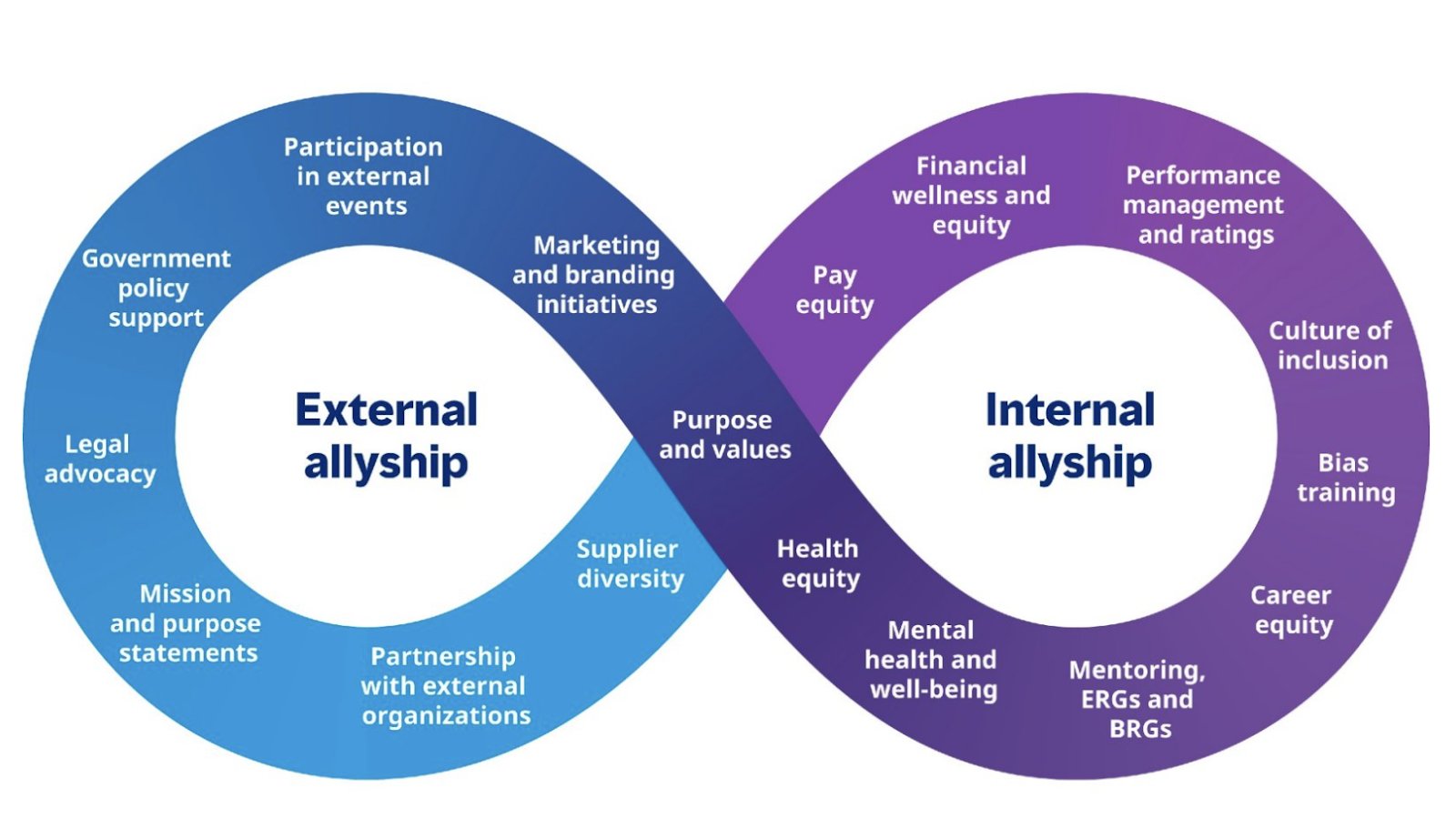 Book Now!
Book Now!Each June, Pride flags appear across office walls, social media profiles, and corporate campaigns. While this visibility can offer moments of joy and representation, it often falls short when it is not followed by meaningful, long-term action. For 2SLGBTQIA+ employees, inclusion must be a year-round commitment that influences workplace culture, leadership, and systems of care.
As a queer art therapist and mental health practitioner, I regularly support clients navigating the gap between public celebration and private exclusion. The presence of rainbows is not enough to guarantee psychological safety or professional opportunity. What makes the difference is how consistently a workplace chooses to affirm, protect, and uplift queer and trans voices in daily practice.
Research shows that queer and trans employees continue to experience widespread workplace discrimination, often impacting both career advancement and emotional wellbeing. According to a national survey by Eagle Canada, around 30% of 2SLGBTQI+ employees in Canada experience discrimination in the workplace, compared to just 3% of non-LGBTQ+ employees (Egale Canada, 2021). This discrimination often leads to emotional exhaustion and anxiety when employees feel compelled to hide their identity. Many reported feeling they had to mask their identity to be taken seriously.
Research from Catalyst shows that fewer than half of LGBTQ+ employees feel safe being themselves at work, whereas 71 percent of non‑LGBTQ+ counterparts report feeling comfortable expressing their full identity (Catalyst, 2023). These disparities negatively affect mental health outcomes, increase turnover, and lower employee engagement.
When inclusion is embedded in policy, culture, and leadership, it creates psychological safety that supports wellbeing organization-wide (Harvard Business Review, 2016).
A rainbow logo in June cannot carry the weight of queer inclusion. Real change comes from revisiting workplace systems, policies, and behaviours. Effective approaches include:
According to a McKinsey & Company report, companies that focus on intersectional diversity are more likely to outperform their peers financially, while also improving workplace culture and team cohesion (McKinsey & Company, 2020). Token gestures may raise visibility, but they do not remove systemic barriers. Sustained inclusion requires policy-backed commitments and transparent accountability.

Mercer, 2025)
A culture of queer inclusion starts at the top. When leadership demonstrates informed, visible, and sustained allyship, it creates space for all employees to thrive. Deloitte’s survey reports that nearly 80 percent of LGBT+ employees say their organization’s inclusion initiatives have made a positive impact. However, 42 percent still report experiencing non-inclusive behaviour at work (Deloitte, 2022).
Leaders set the tone through the policies they prioritize, the stories they amplify, and how they respond to harm. Allyship is not a passive trait; it’s a skill that must be practiced and reflected in daily actions and decisions. When leadership is silent or performative, it leaves queer employees unsupported. When it is responsive, reflective, and resourced, it has the power to transform workplace culture.

(Hacking HR, 2024)
Workplaces that support 2SLGBTQIA+ employees tend to be better for everyone. A psychologically safe environment, flexible workplace policies, and cultural humility benefit all team members, not just those who identify as queer or trans. In fact, Boston Consulting Group found that companies with inclusive cultures saw a 19 percent increase in innovation revenue and stronger employee satisfaction overall (BCG, 2018).
Inclusive environments are also more likely to attract top talent. Younger generations of workers increasingly prioritize values-aligned employers, and many will turn down job offers from companies with weak diversity practices (Glassdoor, 2020). As an art therapist, I regularly see how creativity and innovation thrive in inclusive spaces. When people feel seen and valued, they take more risks, offer more ideas, and form stronger interpersonal connections.
Pride is not a moment, it’s a movement. It reflects how far we've come and how far we still have to go. Queer inclusion in the workplace requires investment, education, and sustained effort. It also demands care and courage. By embedding inclusive practices into your culture and systems, you send a clear message: everyone deserves to feel safe, valued, and respected. That message doesn't just benefit queer employees, it benefits your whole team!
This blog post was written in collaboration with Samantha Shakira Clarke, who is a leader in creating powerful spaces for equity, mental health, and embodied transformation in the workplace. If your team is ready to engage more deeply with diversity, equity, and inclusion, consider working with SSC and our dynamic network of professionals.


